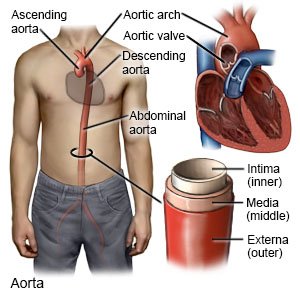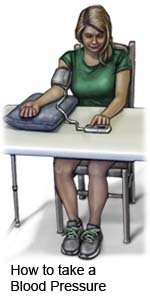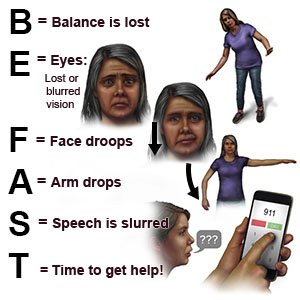Aortitis
Medically reviewed by Drugs.com. Last updated on Apr 6, 2025.
What is aortitis?
Aortitis is inflammation of your aorta. The aorta is a large blood vessel that goes from your heart down into your abdomen. Aortitis usually causes inflammation in all 3 layers of the aorta. The inflammation may cause an aneurysm (bulge) or dissection (tear) in the aortic wall. Aortitis may also cause the aortic valve to leak. The valve opens to let blood go from your heart into your aorta. The valve then closes to prevent blood from flowing back into your heart.
 |
What increases my risk for aortitis?
Aortitis may develop for no known reason. The following are the most common known causes:
- Giant cell arteritis or Takayasu arteritis
- An autoimmune disease, such as lupus or rheumatoid arthritis
- A disease such as sarcoidosis that affects several of your organs
- A bacterial, viral, or fungal infection, such as Salmonella, syphilis, or tuberculosis (TB)
What are the signs and symptoms of aortitis?
Signs and symptoms depend on the cause and which part of your aorta is affected:
- Pain in your chest, back, or abdomen
- Fever, chills
- Joint pain and stiffness, or swollen joints
- A headache, loss of vision, or double vision
- Balance or coordination problems
- Shortness of breath along with swelling in your lower legs
- Weight loss without trying, low energy levels, or heavy sweating
- Heart palpitations
How is aortitis diagnosed?
Your healthcare provider will examine you and ask about your symptoms. Tell your provider if anyone in your family has a history of an autoimmune disease. Tell your provider about any medicines you take. You may also need any of the following:
- Blood tests may be used to check for signs of infection or inflammation.
- A CT, PET scan, MRI, or ultrasound may show thickening of the aorta wall that can be a sign of inflammation. You may be given contrast liquid to help your aorta show up better in pictures. Tell the healthcare provider if you have ever had an allergic reaction to contrast liquid. An MRI machine uses a powerful magnet. Do not enter the MRI room with anything metal. Metal can cause serious injury from the magnet. Tell the provider if you have any metal in or on your body.
- An echocardiogram may show problems with your aorta and how blood flows through your heart. It may also show how well your heart is pumping.
Drugs used to treat this and similar conditions
Benlysta
Benlysta infusion is used to treat active systemic lupus erythematosus (SLE) and active lupus ...
Belimumab
Belimumab infusion is used to treat active systemic lupus erythematosus (SLE) and active lupus ...
Omvoh
Omvoh is used to treat moderate to severe ulcerative colitis or Crohn's disease in adults. This ...
Isoxsuprine
Isoxsuprine systemic is used for cerebrovascular insufficiency, coronary artery disease, raynaud's ...
How is aortitis treated?
Treatment depends on the cause of your aortitis:
- Medicines may be given to reduce inflammation, treat an infection, or control your immune system. You may also need medicines to lower your blood pressure (BP) or cholesterol level.
- Surgery may be needed if the inflammation causes severe damage to your aorta. A stent may be used to make part of your aorta stronger. A graft may be used to replace a section of the aorta.
What can I do to manage or prevent aortitis?
Aortitis cannot always be prevented, but you can lower your risk for blood vessel damage. Your healthcare provider may give you specific instructions based on the cause of your aortitis. The following are general guidelines:
- Manage other health conditions that increase the risk for new or worsening aortitis. Examples are extra body weight, stress, and high BP. Ask your provider what a healthy weight is for you. Your provider can help you create a weight loss plan, if needed. Manage stress by learning new ways to relax, such as listening to music. Check your BP as directed if you have high BP. Your provider will show you how to do this. Check your BP 2 times, 1 minute apart. Check as often as directed each day. Keep a record of your readings and bring it to your follow-up visits.

- Do not use nicotine products or stimulating drugs. Nicotine and drugs such as cocaine increase your risk for a tear, rupture, or other problem in your aorta. Ask your provider for information if you currently use nicotine products or stimulating drugs and need help to quit. E-cigarettes or smokeless tobacco still contain nicotine. Do not use these in place of cigarettes. Avoid secondhand smoke.
- Know the risks if you choose to drink alcohol. Ask your healthcare provider if it is okay for you to drink any alcohol. Your provider can help you set limits for the number of drinks you have within 24 hours and within 1 week. A drink of alcohol is 12 ounces of beer, 5 ounces of wine, or 1½ ounces of liquor.
- Follow physical activity directions. Your physical activity plan may include low-intensity activity, such as walking, yoga, or swimming. You may need to avoid intense physical activity, such as weightlifting or running. Intense activity may raise your BP or put pressure on your aorta. These increase your risk for a tear or rupture. You may also need to avoid contact sports such as football to decrease your risk for a chest injury.

- Follow recommended meal plans. Talk to your provider or a dietitian about a heart-healthy or low-sodium meal plan. These meal plans may help you lower your cholesterol and BP levels, and reach or maintain a healthy weight. Heart-healthy meal plans are low in sodium, processed sugar, and some fats. They are high in potassium, calcium, heart-healthy fats, and fiber. These can be found in vegetables, fruit, and whole-grain foods.

- Get vaccines as directed. Get an influenza (flu) vaccine as soon as recommended each year, usually in September or October. Get a COVID-19 vaccine and all recommended boosters. A pneumonia vaccine may also be recommended. Your provider will tell you if you need other vaccines, and when to get them.
Call your local emergency number (911 in the US) or have someone call if:
- You have any of the following signs of a heart attack:
- Squeezing, pressure, or pain in your chest
- You may also have any of the following:
- Discomfort or pain in your back, neck, jaw, stomach, or arm
- Shortness of breath
- Nausea or vomiting
- Lightheadedness or a sudden cold sweat
- You have any of the following signs of a stroke:
- Numbness or drooping on one side of your face
- Weakness in an arm or leg
- Confusion or difficulty speaking
- Dizziness, a severe headache, or vision loss

- You have sudden sharp pain in your back, abdomen, or groin.
- You cough or vomit blood.
- You cannot feel anything from your waist to your toes.
- You have trouble breathing or shortness of breath.
- You feel dizzy, faint, or you lose consciousness.
When should I seek immediate care?
- You have a fever.
- You have a pulsating lump or swelling in your abdomen.
- You have trouble swallowing.
- You have blood in your urine.
- You are urinating very little or not at all.
- You have at least 1 toe that looks blue or darker than usual.
- You have a foot that changes color and becomes cold to the touch.
- Your skin is pale, sweaty, or clammy.
When should I call my doctor?
- You have questions or concerns about your condition or care.
Care Agreement
You have the right to help plan your care. Learn about your health condition and how it may be treated. Discuss treatment options with your healthcare providers to decide what care you want to receive. You always have the right to refuse treatment. The above information is an educational aid only. It is not intended as medical advice for individual conditions or treatments. Talk to your doctor, nurse or pharmacist before following any medical regimen to see if it is safe and effective for you.© Copyright Merative 2025 Information is for End User's use only and may not be sold, redistributed or otherwise used for commercial purposes.
Further information
Always consult your healthcare provider to ensure the information displayed on this page applies to your personal circumstances.
